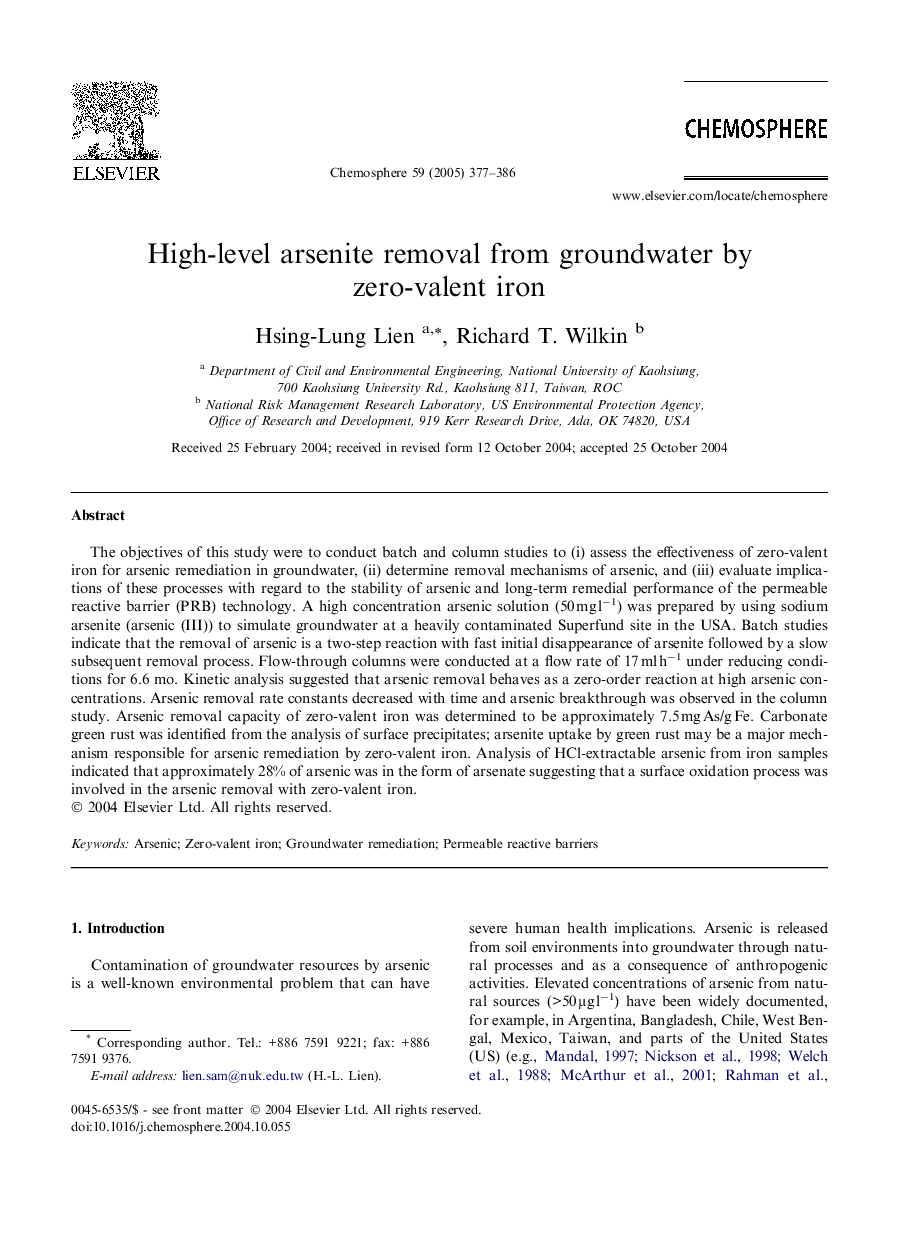| Article ID | Journal | Published Year | Pages | File Type |
|---|---|---|---|---|
| 9451486 | Chemosphere | 2005 | 10 Pages |
Abstract
The objectives of this study were to conduct batch and column studies to (i) assess the effectiveness of zero-valent iron for arsenic remediation in groundwater, (ii) determine removal mechanisms of arsenic, and (iii) evaluate implications of these processes with regard to the stability of arsenic and long-term remedial performance of the permeable reactive barrier (PRB) technology. A high concentration arsenic solution (50 mg lâ1) was prepared by using sodium arsenite (arsenic (III)) to simulate groundwater at a heavily contaminated Superfund site in the USA. Batch studies indicate that the removal of arsenic is a two-step reaction with fast initial disappearance of arsenite followed by a slow subsequent removal process. Flow-through columns were conducted at a flow rate of 17 ml hâ1 under reducing conditions for 6.6 mo. Kinetic analysis suggested that arsenic removal behaves as a zero-order reaction at high arsenic concentrations. Arsenic removal rate constants decreased with time and arsenic breakthrough was observed in the column study. Arsenic removal capacity of zero-valent iron was determined to be approximately 7.5 mg As/g Fe. Carbonate green rust was identified from the analysis of surface precipitates; arsenite uptake by green rust may be a major mechanism responsible for arsenic remediation by zero-valent iron. Analysis of HCl-extractable arsenic from iron samples indicated that approximately 28% of arsenic was in the form of arsenate suggesting that a surface oxidation process was involved in the arsenic removal with zero-valent iron.
Related Topics
Life Sciences
Environmental Science
Environmental Chemistry
Authors
Hsing-Lung Lien, Richard T. Wilkin,
